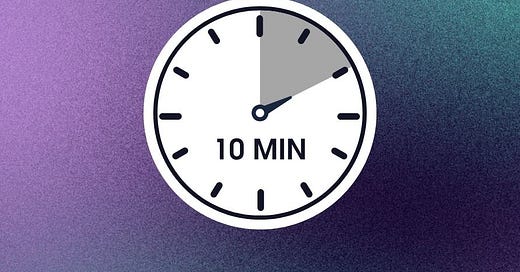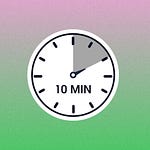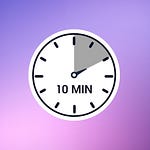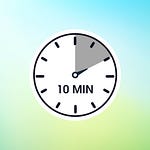This post is available to all subscribers until June 30, 2025 so feel free to share this Live Writing Session!
Thank you
, , , , , and the 25+ writers who wrote live with me today. 🦜If you joined us, you wrote. If you’re watching the replay, you’re about to write. And that is what this is all about.
In today’s post-writing session, I talk about Substack Notes and how learning (and practicing) micro can help you up the quality of your Notes. I also include my 6-page “Substack Storyteller Quick Start-Guide: Some Tips on Crafting Compelling Stories for Notes” PDF guide. It’ll help you understand the power of Notes and how telling your story can help you find your people on Substack.
When are the Live Writing Sessions?
Free and paid subscribers receive notifications when I'm live on Substack. I also post upcoming sessions in the weekly Micro Monday post. If you see a scheduled reminder, click “I’m Interested” and you’ll be notified when I’m live.
The weekly live sessions are always free. Don't worry if you join late—even two minutes of focused writing is valuable. Trust the process and your timing. Remember, we always add titles last, so they can do some heavy lifting regardless of when you join.
How the 10-Minute Sessions Work
Quick and focused: Drop in at the start (top of the hour) and leave right after—just 10 minutes out of your day
I arrive 5 minutes early to welcome you and say hello; I stay 5 minutes after for questions and a brief craft talk or check-in
We start promptly at the top of the hour with a countdown timer on screen
⤓ Download the Live Writing Session Table of Contents template to help track your work (free for all subscribers).
Latecomers are always welcome—just start writing. The prompt will be on screen along with the countdown timer. Even if you show up with two minutes left, you will have something. Trust your timing and make those two minutes count.
Today’s prompt begins at 3:39
Today’s post-session talk begins at 16:52
Paid All subscribers, read on about writing micro for Notes and to download the “Substack Storyteller Quick Start-Guide” PDF guide. 👇🏼
Paid Subscriber Bonus Content: Substack Storyteller Quick Start-Guide
Weekly Challenge: Craft 3 Notes using Tip #1 “Using the 5W’s and 1H framework”in the PDF guide.
Today’s prompt: Tell me about your lungs.
Breathe 🧘🏻♀️: A 90-second breathing exercise with me to get you grounded before you begin to write.
For Notes Expertise:
, Substack Writers at Work. We also have a video together where we talk about Notes in more detail here.
Micro is a great way to hone your Substack Notes, and to experiment with what it is you really want to say.
I’m not going to get into the nitty gritty of Notes, algorithms, stats, etc. (for that, I highly, highly recommend
, as noted above). I have no idea what the wizard does behind the curtain. I am not a growth hack expert though I have managed to find a corner of Substack to play in. What I can share is what I’ve noticed from my experience with Notes, and how it might help you.My Top Five Notes Tips:
Pay attention. What kinds of Notes do you like, comment, or restack? Look closely at what they’ve done—text? White space? Image? What is the first line? What is the last? What do you know that you didn’t know before and, more importantly, how do you feel when you read the Note?
Experiment and play. Don’t stress about getting it right. Instead, be curious about what your Note strengths are. Images? Short quotes? Personal stories and if so, what kind? What else can you do that you haven’t done yet? Push yourself out of your comfort zone. If you really dislike it a few days later, you can always go back and delete.
Emulate. Take someone else’s Note that performs well and try to revise it with your personal details to make it yours. Don’t steal a really creative form (I’ve had that happen and it is bad literary citizenship unless you not only credit them, but truly make it yours).
Stop obsessing. Don’t go down the rabbit hole of Substack and Notes. As I’ve said in one of my Notes, “Being on Substack should be a part of your creative life, not the other way around.” You have a life. You have writing to do. You have people to take care of. You have to take care of yourself. Have fun on Substack but do not let it consume you.
Keep track. Just a little. Or a lot. I keep a Google Sheets of my Notes. Not my restacks, but the ones that are mine and original. I tried to write my Notes in advance and that does not work for me, but it is still good practice. I prefer to write in the moment, which is not efficient, but I’m a writer and efficiency is not how we roll. I will admit that some older Notes make me cringe (those were from early “experiment and play” and “emulate” days, yikes), but generally I feel like my Notes feed represents who I am and what I want to share on Substack. That is the value of looking at your Notes over time; you start to understand yourself and your tendencies better, and it helps you to make more intention decisions moving forward. Here is what I tend to post (feel free to give any likes or comments!):
Personal (non-writing): Nature, living in Hawaii, birds and chickens, our part-time dog, our garden, art
Personal (writing): I just started sharing a couple of micro essays/micro memoirs (1, 2) even though my original plan had been to not to do that all. This is the “experiment” part.
Writing about writing: This could be about my journey (see this and this) or something writing-adjacent (book wreath), inspiring quotes or reminders.
Writing about my teaching or events: I don’t always keep these Notes (I may delete them if they are time sensitive and serve zero purpose in my feed; sometimes I’ll keep them so people know what I’ve been up to and/or can offer). However, I will say that these Notes are the ones that convert free to paid for me.
Writing about micro: Hmm. Just realized I’m not creating enough Notes about this! These exist but they’re pretty lightweight (1, 2, 3). This is why taking stock every now and then is helpful. See, even I’m discovering something new today!
Testimonials and kind words about you from others: I don’t do a lot of this because it feels awkward and weird but on the “experiment” point, I started doing it this month.
Personal introductions: Tell Substack who you are! And you can do this more than once. I checked and I have three (1, 2, 3).
Amplifying others: This can be restacking, writing a Note from scratch or doing something fun, anything that moves the lens from you to someone else (don’t forget to tag them with @ before their name).
If you have any tips or noticed anything interesting in your Notes, do tell! Drop any questions below or in our chat. Don’t forget to share your title and word count from today’s prompt, and let me know how many pieces you have in your TOC.
See you at the next live writing session, and thank you for your support! 🐦⬛













Share this post